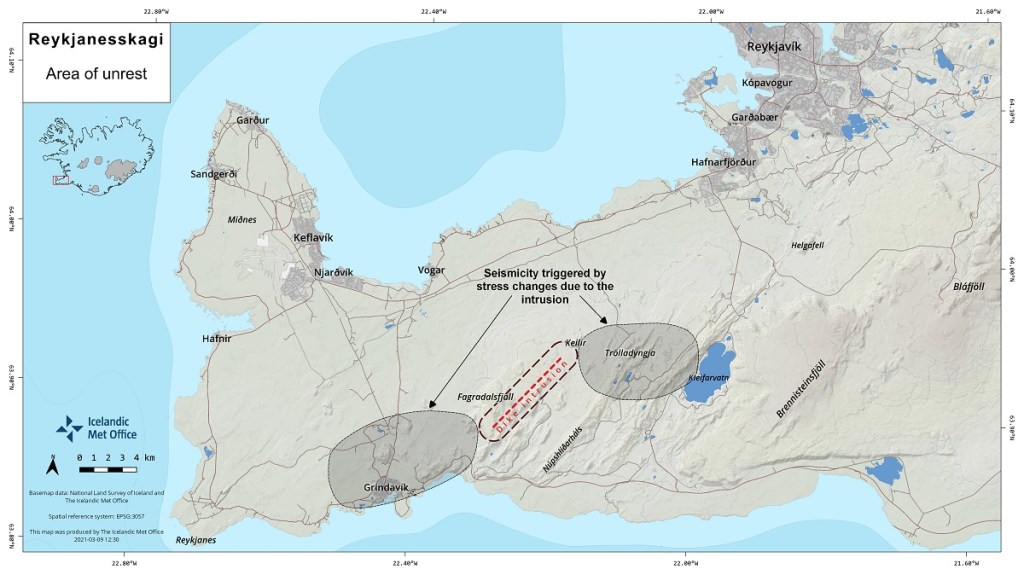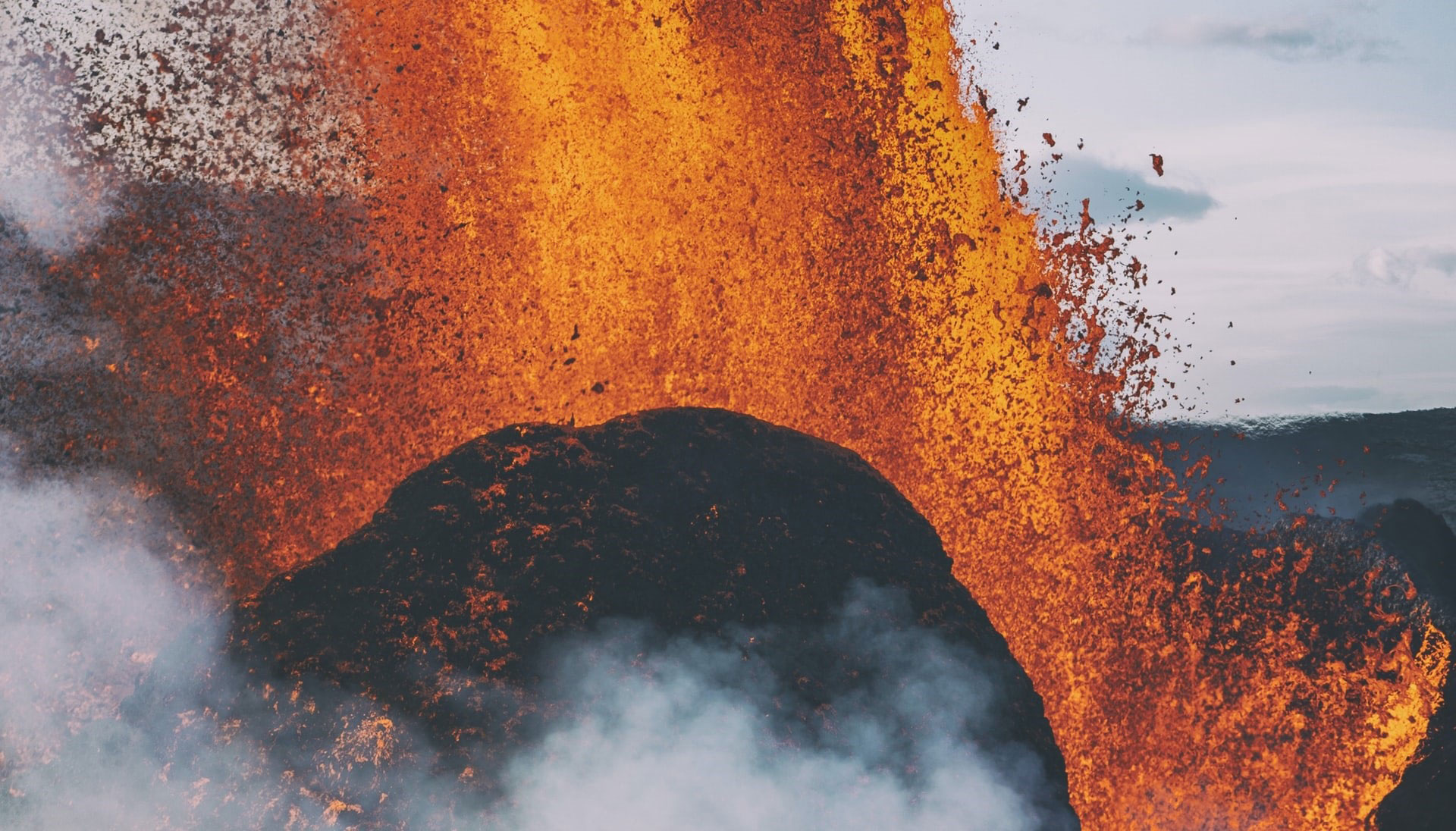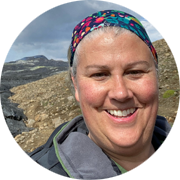
For some people the very thought of an erupting volcano sends them running in the opposite direction. Not Cath Rule, Rayburn’s Geography Tours Development Manager.
“Getting as close as possible to flowing lava has long been on my bucket list. So naturally, when my volcano app (yes there is such a thing) showed an activity alert for Iceland’s Reykjanes Peninsula, I was full of excitement and eager anticipation.
The live web cams showed spectacular footage and lucky locals flocked to the scene. I’d have liked nothing better than to jump on a plane and join them but with a travel ban in place I’d have to settle for watching from afar… for now.
Now don’t get me wrong, I know volcanoes can be dangerous and have a devastating effect on people, but I’ve been fascinated by all things volcanic for as long as I can remember and this eruption, due to its location and type, posed little threat.
Where’s the Volcano?
The volcano is located in south west Iceland on the Reykjanes Peninsula: a feature of the Mid-Atlantic Ridge. The history of volcanic activity is written all over its landscape and six of Iceland’s volcanic systems can be found on the peninsula, running south west to north east. The extraordinary landscape is dominated by extensive fields of crumpled lava, broken by cracks and fissures, with views of volcanic cones and bubbling and steaming hot springs and geothermal areas. 781 years had passed since there had last been volcanic activity on the peninsula. That was about to change.
The Warning Signs
The first sign there might be something happening was in December 2019 when the Peninsula experienced a swarm of earthquakes. Scientists at the Icelandic Meteorological Office (IMO) began to track and monitor deformation of the Earth’s surface, as magma intruded into the shallow crust. In the months that followed there was frequent earthquake activity.
On 24th February 2021, more than a year after the unrest began, a large earthquake, measuring 5.7, jolted the peninsula. Following this the IMO’s seismic network recorded more than 50,000 earthquakes on the peninsula. Scientists identified a corridor of magma between Keilir and Fagradalsfjall which flowed underground for approximately 3 weeks. Then, after nearly 800 years of dormancy, the newest phase of volcanic activity began.

Dykemap, courtesy of the Icelandic Met Office.
On 19th March, at around 20:45 local time, the surface was breached by molten lava in a valley known as Geldingadalir, near a flat topped mountain named Fagradalsfjall, about 6 miles north east of the nearest town, Grindavik. Fagradalsfjall is a table mountain or tuya, formed as the result of a subglacial eruption during the last ice age. It is part of the broader Fagradalsfjall volcanic system.
Initially it was reported as a 700 m long fissure with lava flowing to both sides. Fountains of lava were thrown hundreds of metres into the air, quickly formed a spatter cone that became the main vent for the flowing lava.
In the first month numerous fissures opened, forming several small craters, six in total, but by May lava flow was confined to just one crater, a 5th fissure that opened in April. Watching this play out on the live web cams was fascinating and drone footage on social media offered an incredible insight into the mechanics of a fissure eruption, the formation of spatter cones and, as lava poured into the surrounding valley, the reshaping of the landscape.

Photo by Jonatan Pie on Unsplash
I waited patiently as the months passed, the activity continued and the lava field grew. Then the news I’d been waiting for. Iceland was open! Flights were booked and bags packed, it was time to go to realise a lifelong dream. Fagradalsfjalla here I come!”
Find out what happened when Cath set foot on Icelandic soil and got her first glimpse of the volcano. Read Part 2…

Catherine Rule
Geography Tours Development Manager
Former Geography Teacher & Year Head
Iceland is one of our most popular geography trip destinations, and it’s easy to see why! Take a look at the fantastic excursions, sample itineraries and accommodation options on offer…